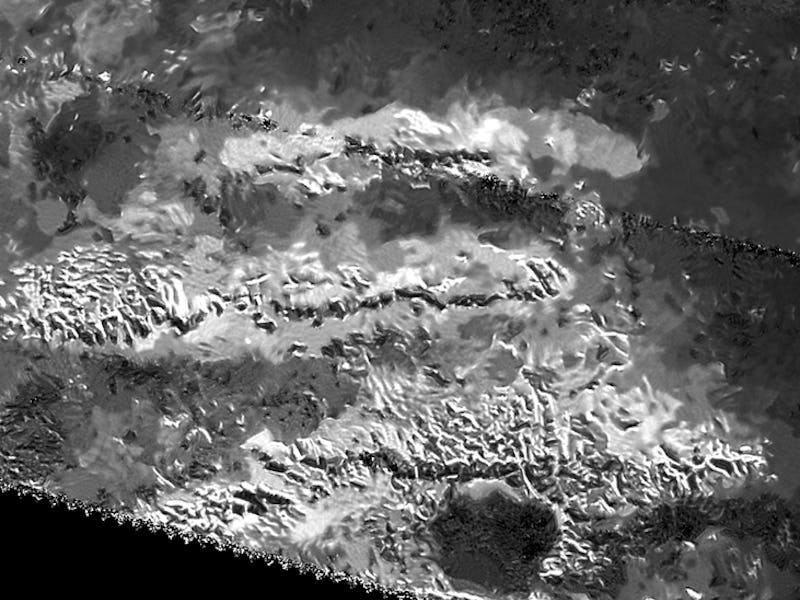We've Spotted the Tallest Mountain on Saturn's Moon
By solar system moon standards, it's pretty impressive.

Cassini, a space probe that’s been orbiting Saturn for more than a decade, has spotted a mountain in the Mithrim Montes ridges of the Titan that, at 10,948 feet feet, is the tallest peak on Saturn’s moon we know of, roughly the height of the glacial Rheinwaldhorn in the Swiss Alps. Compared to Earthly mountains, the Mithrim Montes zenith is not terribly impressive — it wouldn’t crack the top hundred tallest mountains here. What is impressive is that we were able to spot it at all.
A thick haze covers the icy satellite Titan; Cassini must rely on near-infrared waves to scan the surface below.
The discoverers believe the odds are slim that a peak on Titan will beat this one. “It’s not only the highest point we’ve found so far on Titan, but we think it’s the highest point we’re likely to find,” Stephen Wall, a radar expert at NASA’s Jet Propulsion Laboratory, said in a statement.
The largest non-impact mound in the solar system is on Mars, the giant peak of Olympus Mons thrust 69,459 feet above the surface. But most moons — besides where they’ve been hit by craters, or if they’re around Jupiter — don’t have such mountainous features.
This map of Saturn's moon Titan identifies the locations of mountains that have been named by the International Astronomical Union.
To call Titan atypical is an understatement. It’s the only moon with a thick nitrogen atmosphere, it’s unusually large, and it rains liquid methane. Even below the surface, it’s strange. As NASA’s Jet Propulsion Lab put it in the space mountain press release:
Titan’s icy crust sits atop a deep ocean of liquid water that probably acts much like Earth’s upper mantle — the layer of hot, high-pressure rock below the crust that can slowly flow and deform over time. Once a period of mountain-building ends, these fluid layers (Earth’s upper mantle and Titan’s liquid ocean) allow the crust to relax, like a person settling into a waterbed. Also, at great depth, the water-ice bedrock of Titan is softer than rock on Earth. Because of these characteristics, scientists didn’t expect mountains on Titan would tower quite as high as those on Earth, which can rise to more than five miles (nearly nine kilometers) tall.
Titan in natural color. The thick atmosphere is orange due to a dense organonitrogen haze.
The source of the mountains atop this cold, wet satellite is a mystery. The researchers believe there must be tectonic forces forcing the ridge to rise — but it remains unclear, NASA said, if that’s due to Saturn’s gravity, a quirk of Titan’s rotation, or because of the way the moon’s crust is cooling.